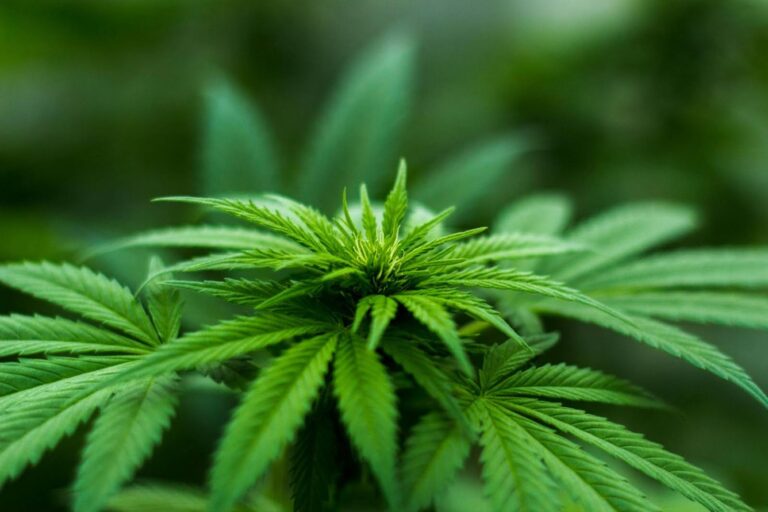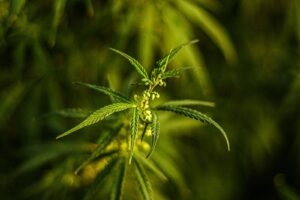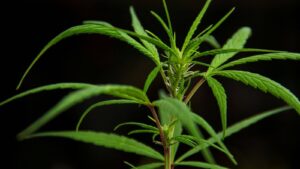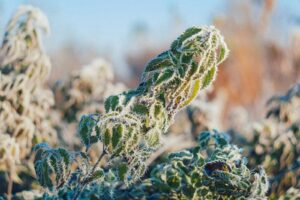Ever asked yourself why some cannabis seems to have a bigger yield and better quality? The secret is in a technique called crop steering. It is crucial to learn crop steering if you want to fine-tune your grow operation, waste fewer resources, and improve the health of your plants.
This allows you to refine each growth stage, ensuring your plants get what they need to thrive. Environmental controls, irrigation strategies, and plant responses to these adjustments improve yield and potency while ensuring quality remains constant across harvests.
In this tutorial, you will learn the basics of crop steering, including managing environmental factors, adjusting irrigation schedules, and fine-tuning nutrient delivery.
What is Crop Steering?
Crop steering is the process of manipulating plant growth through environmental controls, irrigation strategies, and nutrient management. You can help optimize their development and obtain better yields by guiding plants through specific growth phases. This technique is especially useful in cannabis cultivation because the quality, potency, and overall production efficiency can be heavily impacted by controlling the growth of plants.
How Crop Steering Works
- Hormonal Influence: Crop steering influences plant hormones by changing humidity, temperature, irrigation, and light.
- Growth Phase Control: By altering environmental conditions, you can switch plants between vegetative and generative growth.
- Yield and Quality Optimization: A crop steering strategy that maximizes bud production and enhances the terpene and cannabinoid profiles performed well.
- Stress Management: The right crop steering techniques help reduce plant stress, which can lead to stunted growth or poor bud formation.
- Metabolic Regulation: You can regulate plant metabolism by fine-tuning nutrient availability and environmental conditions, ensuring efficient nutrient uptake and energy distribution.
Key Components of Crop Steering
- Environmental Monitoring: Monitoring the climate conditions, including humidity, temperature, and CO2 levels.
- Irrigation Strategies: Watering intervals and amounts are manipulated to direct the plant‘s growth.
- Nutrient Management: Adjusting EC levels to accommodate various growth stages.
- Substrate Selection: Choosing the right growing medium, such as coco coir or rock wool, for optimal water retention and aeration.
- Automation and Precision Control: Sensors and automated irrigation allow for the maintenance of a consistent environment.
So, what are the phases of crop steering in cannabis? Let us find out.
Phases of Crop Steering In Cannabis
Crop steering depends entirely on the different growth phases of crops. Each growth phase has environmental and irrigation requirements that directly impact plant performance and productivity.
Managing these phases ensures that plants receive the right balance of nutrients, water, and environmental conditions at the right time. This optimizes growth, enhances stress tolerance, and results in higher yields and better bud quality.
Here are the phases in detail:
1. Vegetative Growth
This phase focuses on developing healthy roots and foliage to form the basis of a successful crop, as it will set the stage for healthy flowering later on. Careful management of environmental factors, irrigation, and nutrients can ensure plants reach their full vegetative potential. Vegetative growth conditions include:
- Lower electrical conductivity (EC) in the nutrient solution favors root development and uptake of the available nutrients.
- High water content (WC) in the growing medium promotes hydration and reduces stress.
- Minimal stresses on plant growth encourage fast expansion through constant environmental conditions and regular watering schedules.
- Moderate light intensity is needed for smooth photosynthesis without overdriving metabolic activities.
- Lower the vapor pressure deficit (VPD) to maximize transpiration and mass transfer for nutrient uptake and avoid excessive water loss.
- Balanced nutrient composition with higher levels of nitrogen for foliage development.
2. Generative Growth
This is the flowering and budding phase when plants are diverted from vegetative growth to reproductive development. At this stage, the aim is to maximize bud density, resin production, and flower quality in general. To transition plants into generative growth, you usually alter:
- Higher EC levels limit excessive vegetative growth and redirect energy toward bud production.
- Increased vapor pressure deficit (VPD) enhances transpiration and nutrient flow toward flowering sites.
- High light intensity to maximize photosynthesis and bud development.
- Controlled irrigation dry-backs to create mild stress and encourage root expansion, improving nutrient absorption.
- Temperature regulation with slight increases during the day and cooler temperatures at night to enhance flower density and resin production.
- Optimized nutrient ratios, decreasing nitrogen and increasing phosphorus and potassium to encourage bud formation.
Are you curious about how to detect early problems in your cannabis yield? Proper phase balancing prevents overstretching, weak buds, and nutrient issues. PlanaCan removes the guesswork by tracking soil conditions and harvest data, helping you refine methods for higher yields and bigger profits.
Now, let us understand the typical crop steering cycle at each growth stage of cannabis.
The Typical Crop Steering Cycle In Cannabis
Crop steering adheres to a patterned cycle that corresponds to cannabis’s natural growth cycle. This cycle consists of four phases: each requires specific environmental and nutrient provisions for optimal plant performance and maximum yield.
Phase 1: Vegetative Growth
The vegetative stage is the basis of a plant’s health and fertility. In this stage, root development and leaf appearance are centred on establishing a robust plant structure. Proper irrigation, lighting, and nutrient management ensure that the plants receive the essential foliage necessary for good, high-yield flowering at the end of the cycle.
- Root and Leaf Development: Root expansion and leaf production to establish a strong plant structure.
- Watering Requirements: More frequent with lower EC levels to allow the establishment of an ideal root system.
- Plant Development: Causes plants to get a strong root set, enabling vigorous growth at later stages.
- Light Cycle: The day’s light cycle is usually 18+ hours for vegetative growth.
- Optimization of CO2: Only moderate CO2 levels help in increased photosynthesis and nutrient uptake.
- Canopy Management: Techniques such as topping or low-stress training (LST) may be implemented to shape plant structure.
Phase 2: Early Flower
Energy is diverted to the reproductive development stage during the transition from vegetative growth to flowering. This stage is essential for establishing robust bud sites and preparing for yield. Control over environmental factors like light cycles, humidity, and nutrient levels ensures a smooth transition and optimal flower initiation.
- Generative Growth: Transition emphasis shifts from vegetative to generative growth when the plants start flowering.
- Bud Development Phase: Bud site formation begins, and nutrient composition has to be adjusted with increased phosphorus and potassium.
- Irrigation Adjustment: Increase the EC slightly and ensure regulated irrigation for proper water and nutrient uptake.
- Control Humidity: Gradually reduce relative humidity to reduce the chance of molds and mildew formation.
- Light Intensity and Cycle: The light intensity will be increased to simulate flowering. The photoperiod will then shift to a 12/12 light cycle.
- Defoliation Techniques: Canopy management techniques such as defoliation may be implemented to enhance light and air penetration.
Phase 3: Mid Flower
As plants reach the mid-flower stage, they focus on bud expansion and resin production. This is the most critical phase for increasing flower density and maximizing cannabinoid and terpene development.
Environmental stability, precise irrigation strategies, and optimal nutrient levels support rapid growth while preventing stress-related issues. Proper structural support and light management further enhance flower development, ensuring a robust and high-quality final yield.
- Bud Enlargement: The buds expand and gain shape with the help of a balance of nutrients so that rapid enlargement is maintained.
- Environmental Steadiness: Ecological conditions, such as proper humidity and temperature management, should be steady to avoid bud rot and other stress-related issues.
- Light and CO2 Regulation: Light intensity and CO2 increase greatly, and the flower density and resin produced increase significantly.
- Irrigation Method: The dry-backs become more frequent to ensure oxygenation in the root zone.
- Nutrient Optimization: Nutrient adjustments ensure optimal cannabinoid and terpene development.
- Structural Support: Support structures such as trellising may be used to manage plant weight and prevent structural damage.
Phase 4: Late Flower
The late flower stage is the last but most critical stage before harvest. At this stage, plants ripen and produce resin, directly affecting potency and aroma and greatly impacting overall bud quality.
- Ripening and Resin Production: Attention to ripening and resin production is paramount to maximizing potency and aroma.
- Humidity Control: To avoid mold and bud rot, humidity must be strictly managed, frequently at as low as 40-45%.
- Final Nutrient Adjustments: You should reduce EC to force plants to burn stored nutrients, which can improve terpene and cannabinoid content.
- Flushing Techniques: Some of you apply flushing techniques to flush out excess nutrients to help assure better flavor and combustibility at harvest time
- Lighting Adjustments: The lighting spectrums may be increased in red wavelengths for the final stages of maturity
- Harvest Monitoring: Harvest times are closely monitored through trichome color analysis.
|
Phase |
Key Focus |
Environmental & Irrigation Adjustments |
|
Phase 1: Vegetative Growth |
Root and leaf development for a strong structure. |
– Lower EC for root expansion. |
|
Phase 2: Early Flower |
Shift to generative growth and bud formation. |
– Increase EC for flower production. |
|
Phase 3: Mid Flower |
Bud expansion and resin production. |
– Maintain stable conditions. |
|
Phase 4: Late Flower |
Final ripening and resin enhancement. |
– Control humidity (40-45%) to avoid mold. |
Environmental Factors Influencing Crop Steering In Cannabis
Careful adjustment of these variables can help you guide plant growth toward optimal vegetative or generative phases. Below are the environmental factors that influence crop steering in cannabis:
1. Vapor Pressure Deficit (VPD).
VPD is the difference between moisture in the air and the amount of moisture the air can hold when saturated. The presence of VPD directly impacts a plant’s transpiration process efficiency.
- High VPD (low humidity, high temperature): It encourages generative growth by increasing transpiration and nutrient flow but can lead to excessive water loss if not managed properly.
- Low VPD (high humidity, low temperature): It promotes vegetative growth but can slow transpiration, leading to nutrient deficiencies and mold susceptibility.
- Optimal VPD Range: Maintaining an ideal range (often 0.8 – 1.3 kPa for vegetative growth and 1.3 – 1.6 kPa for flowering) ensures that water and nutrients are effectively transported through the plants.
- Monitoring and Adjustments: Automatic sensors and real-time data analysis, with assistance from VPD charts, enable you to regulate humidity and temperature in the most appropriate range for optimal VPD.
2. Humidity, Temperature, and CO2
These environmental factors are closely related and need adjustments at various stages of growth.
- Humidity Levels: Low humidity levels drive plants towards the generative phase. High humidity promotes vegetative growth but must be tapered off as plants flower. At the late flowering stage, low humidity levels, 40-50%, decrease the chances of mold and bud rot.
- Temperature: Warm temperatures increase respiration and promote healthy vegetative growth. Cool nighttime temperatures can positively affect resin production and bud density for later flowering terminations, while day-to-night temperature differences may help regulate plant development and influence internodal spacing.
- CO2 Concentration: Elevated CO₂ levels (1,200–1,500 ppm) boost photosynthesis and biomass production, especially under high light intensity. However, effective CO₂ management requires proper ventilation to prevent excessive buildup, which can hinder nutrient uptake. CO₂ supplementation is most effective during the vegetative and early flowering stages, enhancing growth rates and yield potential.
3. Light Intensity and Photoperiod
Light directly affects photosynthesis, energy allocation, and crop steering.
Vegetative Growth:
- Longer light cycles (18-24 hours) promote vegetative growth, helping plants establish strong roots and leafy canopies.
- Blue-dominant light spectrums encourage short, bushy growth, reducing excessive stretching.
Flowering Growth:
- Increased light intensity during flowering enhances bud density and resin production.
- Red-dominant light spectrums encourage robust bud formation and generative responses.
- A strict 12/12 light cycle is required to trigger and maintain flowering in photoperiod-sensitive strains.
4. Light Penetration and Distribution:
- Canopy management techniques, such as defoliation and plant training, can increase light penetration to lower bud sites.
- Proper spacing between plants ensures even light distribution, which mainly helps eliminate spots that can result in low yields.
- The plant stage will adjust light intensity. Flowering requires high intensity for resin production, and to prevent stress, it will be lower in the early stages of vegetative growth.
Optimize your growth with PlanaCan. Tracking harvests and key decisions helps you spot issues like salt buildup or moisture imbalance before they escalate. With automated climate control, real-time monitoring, and manual adjustments, you can fine-tune crop steering for healthier plants, higher yields, and superior quality.
Now, let us understand how to manage irrigation for crop steering in your cannabis plant.
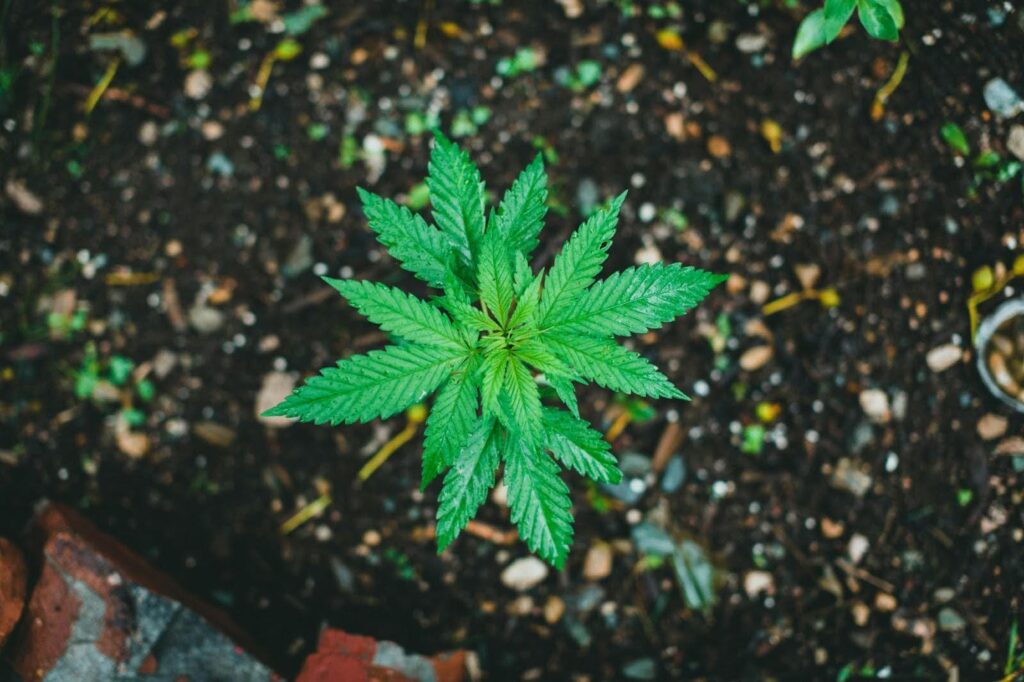
Irrigation Management in Cannabis Crop Steering
Proper irrigation can greatly affect plant health, yield, and efficiency. Furthermore, irrigation techniques should be specific to a growing medium, plant genetics, and environmental conditions to maximise effectiveness.
Vegetative Irrigation:
- High water content (WC) and low electrical conductivity (EC) favor root development and leaf growth.
- Regular and uniform irrigation will lead to the establishment of firm, deep roots without drought stress.
- When moisture and oxygen in the substrate are balanced, nutrient and microbial activities are enhanced.
- Automated irrigation systems could accurately measure the moisture content, reducing human error and inconsistencies.
- Water temperature should also be kept at 65-75°F (18-24°C) to reduce root shock and maximize nutrient absorption.
- Oxygenated water and hydrogen peroxide solutions can benefit the roots; harmful pathogens should be reduced, too.
Generative Irrigation:
- Lower WC and higher EC tip plant energy away from vegetative growth towards the development of the flowers.
- A controlled cycle for irrigation reduces transpiration uptake, allowing buds to get stronger and denser.
- Over time, decreased water volumes contribute to more resin production, terpene, and better quality.
- Shorter, intense dry back phases increase root activities and nutrient uptake, driving a more generative response.
- Strategic water stress at the late flowering stage can induce stress responses that increase terpene and cannabinoid profiles.
- Pulse irrigation, which frequently delivers small amounts of water, can help better control nutrient uptake and reduce runoff.
Dry-Back Strategies:
This technique is particularly useful in generative steering, where controlled dry-back periods enhance flower production and resin accumulation. Some of the key dry-back strategies include:
- Improving Root Oxygenation: The slight drying between irrigation cycles will improve root oxygenation and force generative responses.
- Dry-Back Intensity Adjustment: The intensity of dry-backs needs to be adjusted according to the growth stage. Mild dry-backs occur at early flowering, and more aggressive dry-backs at later stages.
- Root Zone Efficiency Improvement: Properly timed dry-backs enhance the efficiency of the root zone, increasing nutrient mobility and minimizing over-saturation risks.
- Moisture Sensors: Substrate moisture sensors and automated irrigation systems allow you to control dry backs, completely preventing dehydration or nutrient imbalances.
- Water Loss Rates: Daily water loss rates can be tracked and adjusted according to irrigation cycles using PlanaCan’s Interactive Calendar for Planning and Tracking, which provides a clear visual timeline for scheduling and managing cultivation tasks. This allows you to plan while making real-time adjustments to optimize crop uniformity and overall plant health.
- Layered Irrigation Approach: It ensures that the lower layers of the substrate dry slower than the top, preventing salt buildup and maintaining root vitality.
Optimizing irrigation schedules and implementing strategic dry-backs can effectively steer crop development. Proper irrigation management prevents issues such as root rot and nutrient imbalances and maximizes the potential of each growth phase.
So, how do you manage the root zone in your cannabis? Let us understand how.
How to Implement Crop Steering in Cannabis Indoor Cultivation
Crop steering in indoor cultivation optimizes plant growth by managing environmental factors. Using technology, you can fine-tune irrigation, lighting, and airflow to guide plants through different growth phases. Adjusting ecological conditions based on plant signals improves yield, health, and resource efficiency.
Here is a structured approach to implementing crop steering, covering data collection, climate uniformity, sensor integration, lighting optimization, and airflow management:
1. Data Collection and Monitoring
Effective crop steering begins with real-time data collection. Installing temperature, humidity, light, and irrigation sensors ensures precise control. Automated systems continuously track plant responses, allowing timely adjustments.
How to implement data collection and monitoring:
- Install climate sensors throughout the grow space to capture real-time conditions.
- Use cloud-based storage to track historical trends and refine future strategies.
- Integrate AI-driven analytics to predict potential issues before they arise.
- Automate data logging to reduce manual monitoring and human error.
2. Climate Uniformity
Maintaining stable environmental conditions prevents localized stress and promotes uniform plant growth. Even minor fluctuations in temperature and humidity can impact development.
Steps to ensure climate uniformity:
- Distribute temperature and humidity sensors evenly throughout the growing space.
- Use oscillating fans, HVAC systems, and dehumidifiers to maintain air circulation.
- Install automated shading or thermal curtains to regulate temperature fluctuations.
- Calibrate environmental controls to ensure even conditions across the entire room.
3. Sensor Integration for Environmental Control
Integrating sensors with automation systems enables precise environmental adjustments based on plant needs. This minimizes manual intervention and improves efficiency.
How to integrate sensors effectively:
- Implement smart irrigation systems that adjust water and nutrient delivery in real-time.
- Use wireless monitoring solutions for remote tracking and alerts.
- Employ multi-sensor fusion technology to simultaneously analyze temperature, humidity, CO2, and light conditions.
- Sync sensor data with automation tools to dynamically adjust climate control systems.
4. Lighting Optimization for Growth Phases
Lighting must be adjusted throughout the plant’s life cycle to support optimal growth. The right spectrum and intensity can enhance plant morphology and yield.
How to optimize lighting:
- Use programmable LED or HID systems tailored to each growth stage.
- Perform light mapping to eliminate shadowed areas and ensure even distribution.
- Set up dimmable lighting solutions to simulate natural sunrise and sunset effects.
- Adjust spectra dynamically—blue light for vegetative growth, red light for flowering.
- Automate lighting schedules to reduce manual adjustments and optimize energy efficiency.
5. Airflow and CO2 Management
Proper airflow and CO2 levels enhance photosynthesis and plant health, reducing disease risks.
Steps for effective airflow and CO2 management:
- Install controlled ventilation systems to ensure fresh air exchange.
- Set up CO2 enrichment systems with automated release mechanisms.
- Use HEPA filters in ventilation systems to prevent contaminants and pathogens.
- Adjust fan speeds dynamically based on real-time temperature and humidity readings.
- Optimize air circulation to prevent mold growth and maintain a stable climate.
Conclusion
Crop steering is a science that demands precision and consistency, but mastering it is worthwhile. Controlling environmental conditions, irrigation strategies, and root zone health can optimise growth and yields. Regardless of the growing medium or crop steering method used, the fundamental principles remain unchanged: closely monitoring plant responses and making precise adjustments produces superior harvest quality.
PlanaCan is a tool that helps you run your cannabis operations more efficiently through automation and data-driven insights. A template can be used to schedule customizable tasks from planting to harvest, and an interactive calendar allows a clear view of events on a timeline for planning and tracking purposes. You can easily manage long-term schedules and daily tasks, making real-time adjustments if necessary. Centralized information ensures that tasks aren’t missed and workflow stability is achieved.
You can optimize your cannabis operation for better health, higher production, and overall organization with the help of PlanaCan.
Schedule a free call today to get a free meeting and learn how PlanaCan can improve your cultivation strategies.

